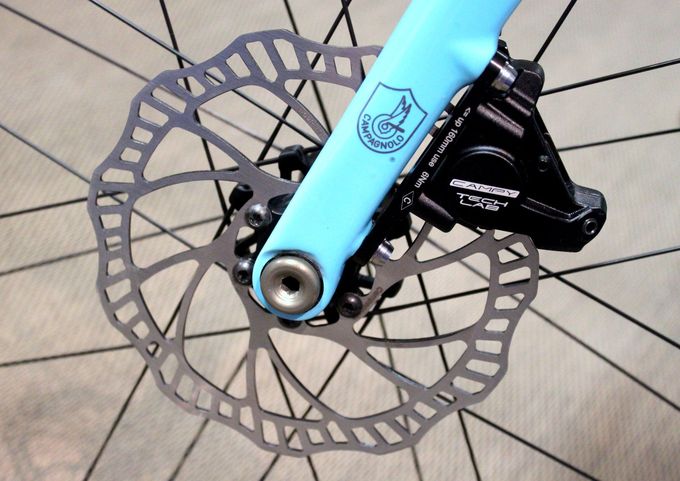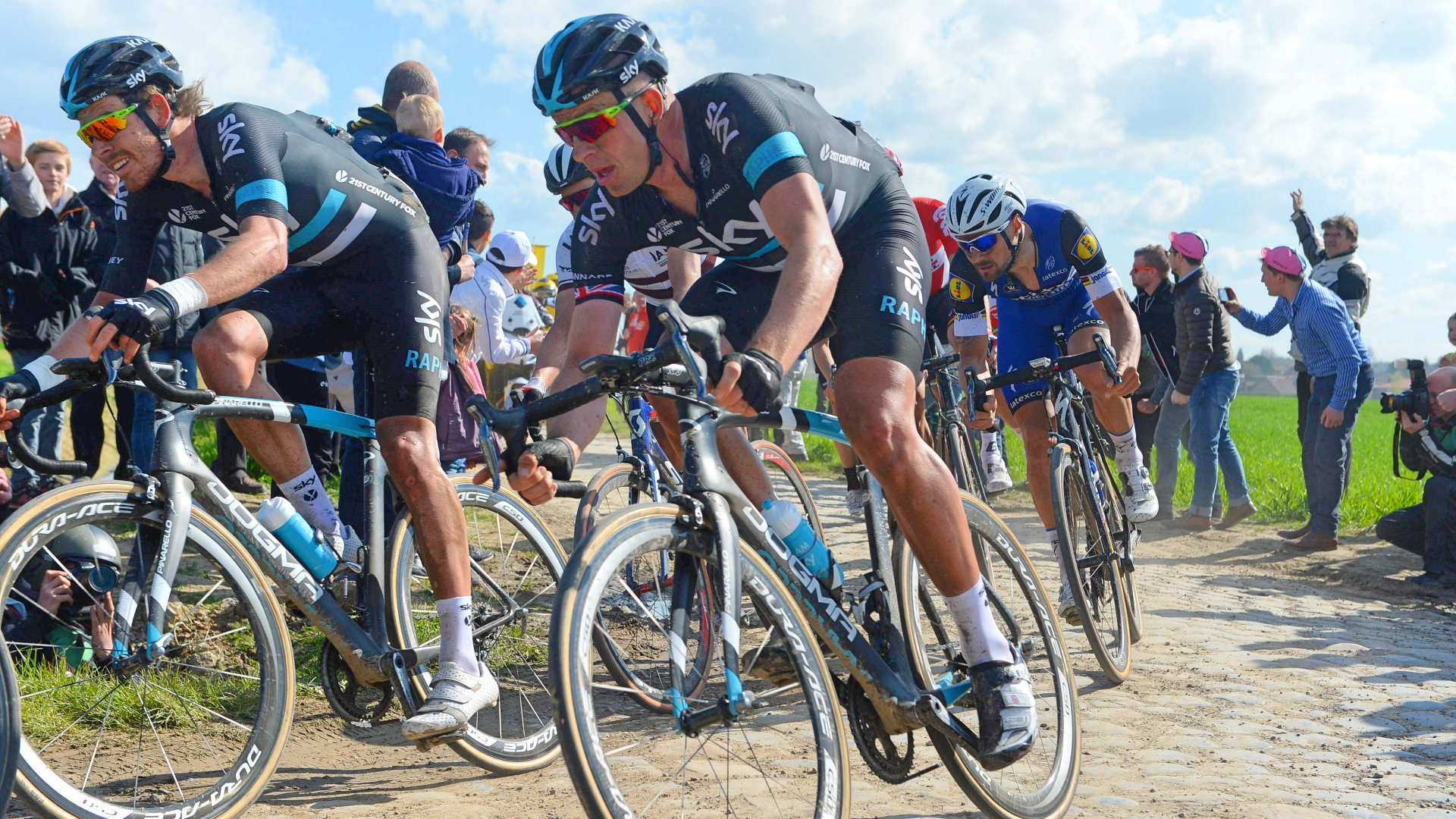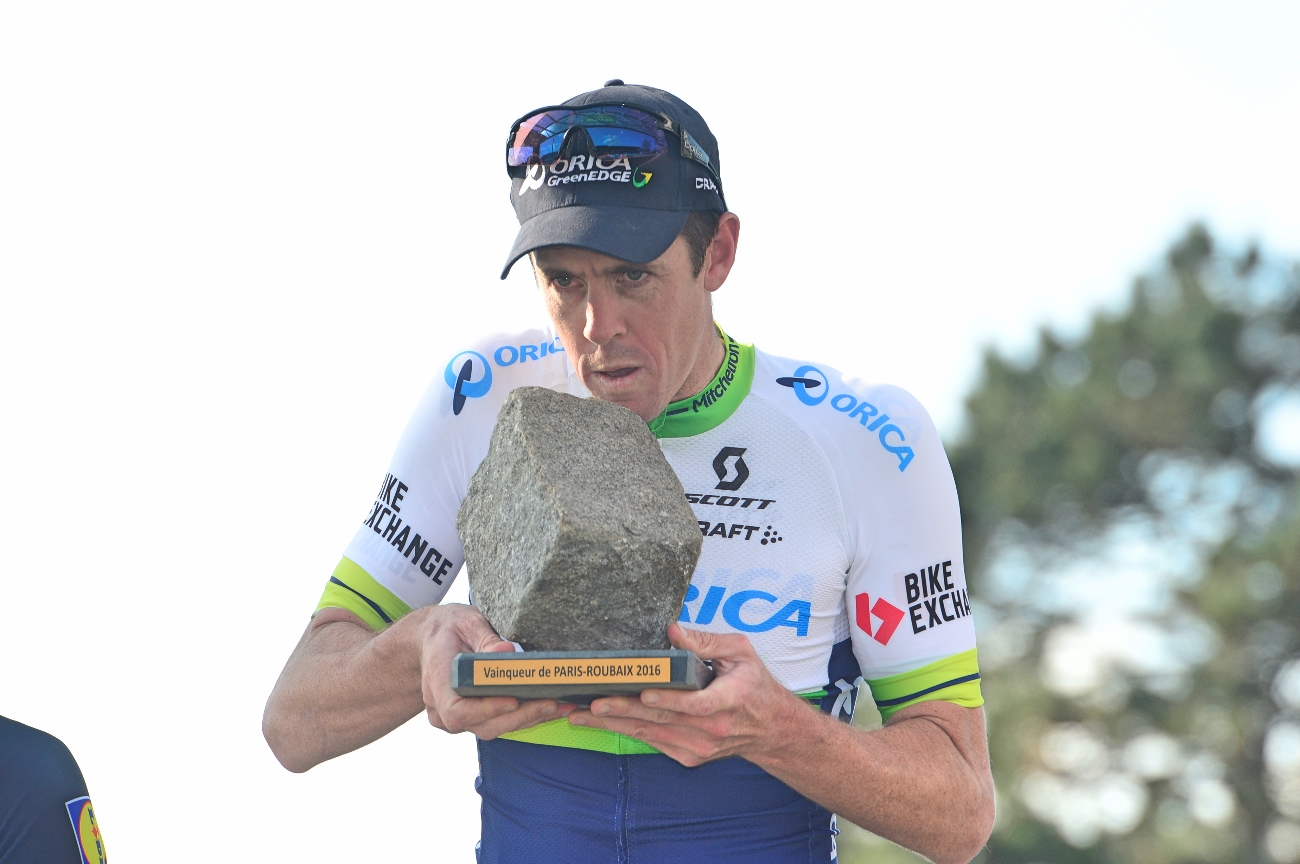It was a matter of when, not if, but Campagnolo have announced details of a long-awaited disc brake system.
Except they haven’t. Instead, the Italian grand masters have confirmed they are working on a disc brake groupset – dubbed the Campagnolo Disc Brake Project – and it’s likely to be finished this year. They are remaining extremely tight-lipped on the details – though we were invited to a pre-launch event to look at (but not ride) three working prototypes.
Also new from Campagnolo…
Campagnolo launch new Potenza groupset to take on Shimano Ultegra
Campagnolo Shamal wheelset updated with wider rim
At the event, Campagnolo did reveal a few small details about the forthcoming product and the development process, which falls under the auspice of the Campy Tech Lab, as well as the testing which will soon take place with Campag’s three WorldTour teams.

With that in mind, here’s are the headlines and what we know so far, and you can also draw your own conclusions from the bumper gallery at the bottom:
- Campagnolo disc brakes currently on test with Astana, Lotto-Soudal and Movistar
- Expected to be used by a small number of riders at the Spring Classics
- System is hydraulic, will be versions for mechanical and electronic groupsets
- Flat-mount and post-mount
- Carbon fibre and aluminium disc-specific Campagnolo wheels also in development
- Official launch date unconfirmed







































